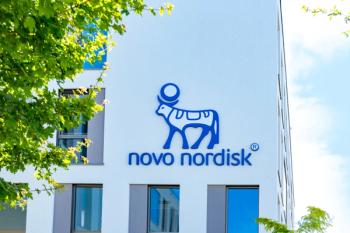
- Pharmaceutical Executive-10-01-2011
- Volume 0
- Issue 0
Pharm Exec: 30 Years, 30 Leaders
Pharm Exec celebrates its 30th birthday with a gathering of 30 of the industry's key influencers of the last three decades.
THIS MONTH'S PHARMACEUTICAL EXECUTIVE is a celebration of our 30th year in providing timely, comprehensive coverage of the issues, trends, and people that shape this endlessly inventive—and profitable—industry. It is not a profile of record. Our focus is idiosyncratic, opinionated, and decidedly non-idolatory about what the industry and its leaders have accomplished—and where it has fallen short. And in contrast to many other commemorative reviews, we bend toward what has been in order to furnish insight on the future.
William Looney
A contradiction? Not in any way. Memory is the pantry of mindful replenishment; it should speak to us every day. At work, it serves as the prerequisite for experience, informing the present, and setting a baseline for what is to come. The hard part is combining all this with spirit, wisdom, and context—traits of character that true leaders seem to carry in their DNA.
Speaking of leadership, front and center
A sift through the profiles finds some common strands that readers may find useful in navigating a complex and strategically unpredictable business environment. One early indicator of change: Not one CEO mentioned golf as a driver of "competitive differentiation." Allergan CEO David Pyott notes, "Thirty years ago that must have been fun, but as a Scotsman, it's embarrassing to say I just haven't had the time to learn to play. The only exercise I get today is riding the product cycle."
A distinctive quality found in nearly all the profiles is confidence, which is best exhibited by the ability to admit you don't know all the answers. In fact, what often determines leadership success is being able to ask the good question—and then to listen carefully to the response. In other words, curiosity is the antidote to hubris, particularly when leadership is formally recognized and bureaucracy intervenes under the guise of saving an executive's time for what is "essential."
It follows that in shaping the contours of an entire industry, people skills are paramount. We see in many of the profiles that the grand ideas that launched entire segments of the industry, including the CRO business model, were hatched literally at the kitchen table, by a handful of people who had no office to report to, carried no thoughts of hierarchy, and never communicated through PowerPoint.
Memories relayed provide grist for the future. The conclusion I draw from these portraits is the advice they contain for an industry whose most critical oncoming challenge is scaling down its cost profile, producing good science at a price that society can continue to afford to pay. Innovation must be turned on its face, from a focus on high-margin products and therapies to process improvement, where the emphasis is finding cheaper ways to make that long transition from the bench to the bedside. A culture of relentless productivity, at all stages of the product cycle, but especially toward the end, will be the defining requisite of future growth. Getting beyond the pill is part of this. So too is the capacity to leverage lessons from the emerging countries. As noted in the forward-looking feature written by Martin Reeves and colleagues (page 54) of the Boston Consulting Group, their profitability potential rests on how well Big Pharma serves low- and middle-income populations by creating the "cheapening technologies" that deliver better access at prices that more people in these nations can afford.
In addition, there is advice on how to cope with complexity: simplify your space and communicate it widely. No leader should ever fear sounding repetitive because rare is the organization that can digest—and then execute—a vision with dozens of moving parts. And every statement must be graded to illustrate what you are putting at stake, in a way that is understandable to everyone in the organization first, and then to the world outside. This "no surprises" approach may appear to institutionalize the mundane, but it is very important to the relationship with the customer, who, in contrast to 30 years ago, has many new options in contracting around value. Trust is critical, not only in the hard evidence that customers now insist be built in to any deal, but in managing the many human intangibles that contribute to successful partnerships.
Likewise, what constituted evidence 30 years ago, in the form of the narrow theoretical construct of the randomized clinical trial, is now yielding to "real world" clinical experience. The change offers a different opportunity, in that companies able to communicate that experience well and engage more broadly with accessible messaging have a leg up in winning the regulator's support. FDA commissioners are people too!
Thus, a proactive communications culture can deliver benefits at every level of the organization. But doing it well means starting at the top.
But what resonates most from our talks from past to present is the enduring importance of an industry that can position itself as part of a community—the arbor master around the tree of life. In that regard, assessment of company reputation is emerging as a real source of competitive edge, even if it lacks real metrics. This is increasingly because government—embodiment of the public interest—is certain to occupy root and branch in this tree, as high-profile regulators and, increasingly, as penny-pinching payers. It's equally true that, as in any solid community, membership occurs by invitation, expressed in the quality and breadth of the relationships that C-suite executives build in day-to-day business. Decorum counts: Who wants to break bread with a neighbor with messy table manners? As Novartis Chairman Daniel Vasella says, the best way to preserve that claim to community is to clean up the compliance mess and end the appearance that paying fines is just a temporary business expense.
Ultimately, however, the health sector of which we are a part is a reflection of the frailties of the human condition. Regardless of the accomplishments that decorate this special issue, we know from history that in health, progress is partial while disease is permanent. The best science still provides little protection against poverty, waste, ignorance, corruption, and discrimination. And now that health is rightly classified as a development issue—another sea change from 30 years ago—the negative impact of these on progress against disease is statistically measurable.
The dilemma of the health disconnect is best illustrated by something I witnessed a few years ago in India. There, in a rural village, I saw a young girl astride a mule-drawn cart, loading one ripe shiny melon after another, presumably to deliver a hefty price at market, while a few feet away, at the back of the cart, an equally determined young goat was pulling each melon off, biting it once and moving on to the next. Talk about a conflicted mission—or a contradictory result. And despite being in close proximity, neither of the two knew what the other was doing; talk therapy was, at least in this case, likely to fail. This is the essence of health policy: two steps forward, but always one step backward too. Over the next 30 years, let's hope the industry we represent keeps extending its own footprint to ease the long walk to health.
William Looney
Editor-in-Chief
Articles in this issue
about 14 years ago
Pharmaceutical Executive Digital Edition - October 2011about 14 years ago
Y. K Hamied : Changing the Dialogueabout 14 years ago
Fred Frank: Fortune and the Financierabout 14 years ago
Marck McLellan: An 'A' for Advancing Expectationsabout 14 years ago
Inside the Mind of the CEO: Steve Collisabout 14 years ago
Atsushi Nagahisa: Creating Customer Valueabout 14 years ago
Physicians: Still the Vital Connection in Medicineabout 14 years ago
Henry Waxman: "Representing" Healthcare to the Fullestabout 14 years ago
IP: Securing a Global Consensus—Can Industry Do It Again?about 14 years ago
In Establishing the Evidence Base, He Made Science CountNewsletter
Lead with insight with the Pharmaceutical Executive newsletter, featuring strategic analysis, leadership trends, and market intelligence for biopharma decision-makers.





